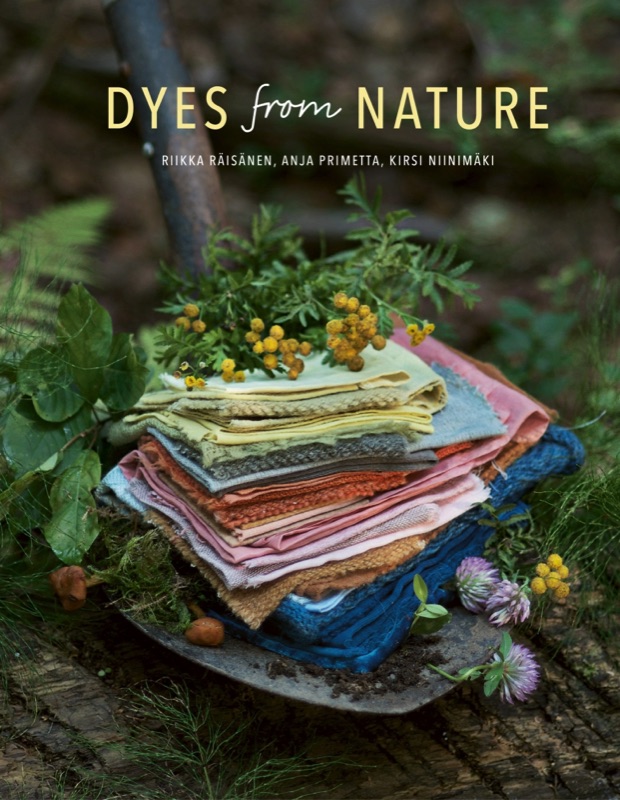Plants, algae, fungi and insects have been used as dye sources for centuries. Focusing on the sources of dyes that grow wild, or are suitable for cultivation, in Northern Europe, this book explores the versatility, practical uses and environmentally safe applications of natural dyes, while at the same time delving into their botany, chemistry and methods of dyeing.
The reader is presented with details of dyes from different sources and information on dyeing practice accompanied by a wealth of beautiful photographic images that illustrate the possible tangible end results discussed in the narrative.
Dyeing has traditionally been linked with small-scale craftsmanship and many recipes for home dyeing together with guidance for textile printing are included. However the authors also show how natural dyes are now being utilised on an industrial scale and are becoming increasingly important as a source of renewable raw materials.
For a look inside click here.
Foreword: Applications of natural dyestuffs
Introduction: History of natural dyestuff.
PART I SOURCES OF COLORANTS
BLUE
King of colours
Woad (Isatis tinctoria) and Japanese indigo (Persicaria tinctoria)
Bird cherry (Prunus padus).
Chokeberry (Aronia × mitschurinii)
RED
Queen of colours
Madders (Galium)
Buckthorns (Rhamnus)
Webcaps (Cortinarius)
YELLOW
Rich shades of yellow
Goldenrods (Solidago)
Dyer’s rocket (Reseda luteola)
Tansy (Tanecetum vulgare)
Common sunflower (Helianthus annuus)
Marigold (Calendula officinalis)
Safflower (Carthamus tinctorius)
Tickseeds (Coreopsis)
Yellow chamomile (Anthemis tinctoria)
Saw-wort (Serratula tinctoria)
GREEN
Not only from chlorophyll
Red clover (Trifolium pratense)
Nettles (Urtica)
Large-leaved lupin (Lupinus polyphyllus)
Common reed (Phragmites australis)
Brown algae (Phaeophyceae)
Velvet roll-rim (Tapinella atrotomentosa)
BROWN
Shades from tannins
Willows (Salix).
Alders (Alnus)
BLACK
From many sources
Gypsywort (Lycopus europaeus)
PART II DYEING AND FABRIC PRINTING
Dyeing: useful tips.
Which sources of colorant can be gathered
from the wild?
Textile fibres and their preparation
Preparing the dye liquor
Mordanting
Metal salts as mordants
Mordanting methods.
How do different mordanting methods affect dyeing outcomes?
Natural mordants.
Other dyeing auxiliaries
Dye recipes
Basic dye recipe
Old recipes
Experimental dyeing
Dyeing in the microwave oven
Contact dyeing
Sun dyeing
Vat dyeing with woad
Patterning in dyeing
Gradation dyeing
Ikat dyeing
Fabric printing with natural dyestuffs
Fabric printing with vegetable dyes
Printing with indigo
Resist printing
Mordant printing
Etch printing
Printing with mineral dyes
Printing with fungus dyes
PART III DYESTUFF TECHNOLOGY
Colour and colorants
Colour in textile fabrics
Origin and function of colorants in nature
Natural colorants and their structures
Fungi as colorant sources
Colorants in lichens
Factors affecting dye uptake
Dyestuff types according to the dyeing method
Solubility of colorants
The structure of fibre and textile materials
Adherence of dyestuff to the fibre
Effect of pH on dye
Dyestuff production
Gathering from nature
Cultivation of colorant plants
Industrial by-products
Biotechnology in colorant production
Pre-treatments and extraction of the colorant.
Pre-treatments and the storage of plant
and fungal material.
Extraction
Dyeing and fabric printing processes
Vat dyeing
Mordant dyeing
Towards an ecological dyeing process.
Digital textile printing
Characteristics of natural dyestuffs in textiles
Colourfastness
UV protection
Antimicrobial properties
Role of nanotechnology in improving properties
Eco-friendly textile production
From design to product
Challenges of cultivation.
Textile production processes and wastewater
Marketing
Products suitable for a closed cycle
Consumer acceptance
Postscript
References
List of photographers
Appendices
Comparison of dyestuff mixtures, pure natural colorants and synthetic dyes
Colorant plants and colours
Indices
"Of particular interest to those studying and experimenting with natural dyes....There is a lot of interesting information not found in many other natural dyeing books and few natural dyers will be unable to find something new to try...there is a wealth of study material to last for quite some time."
The Journal of Weavers, Spinners and Dyers - June 2017
